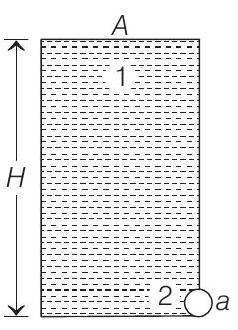Wave Motion 3 Question 9
9. A long wire
(1999, 10M)
(a) the time taken by the wave pulse to reach the other end
(b) the amplitude of the reflected and transmitted wave pulse after the incident wave pulse crosses the joint
Show Answer
Answer:
Correct Answer: 9. (a)
Solution:
- Amplitude of incident wave

Tension
Amplitude of incident wave
Mass per unit length of wire
and mass per unit length of wire
(a) Speed of wave in wire
and speed of wave in wire

(b) The expressions for reflected and transmitted amplitudes (
Substituting the values, we get
i.e. the amplitude of reflected wave will be
i.e. the amplitude of transmitted wave will be
Suppose the incident wave of amplitude
In reflected as well as transmitted wave,
Now, as wave is continuous, so at the boundary
Continuity of displacement requires
Substituting, we get
Also at the boundary, slope of wave will be continuous i.e.,
for
Which gives,
Solving Eqs. (iv) and (v) for






